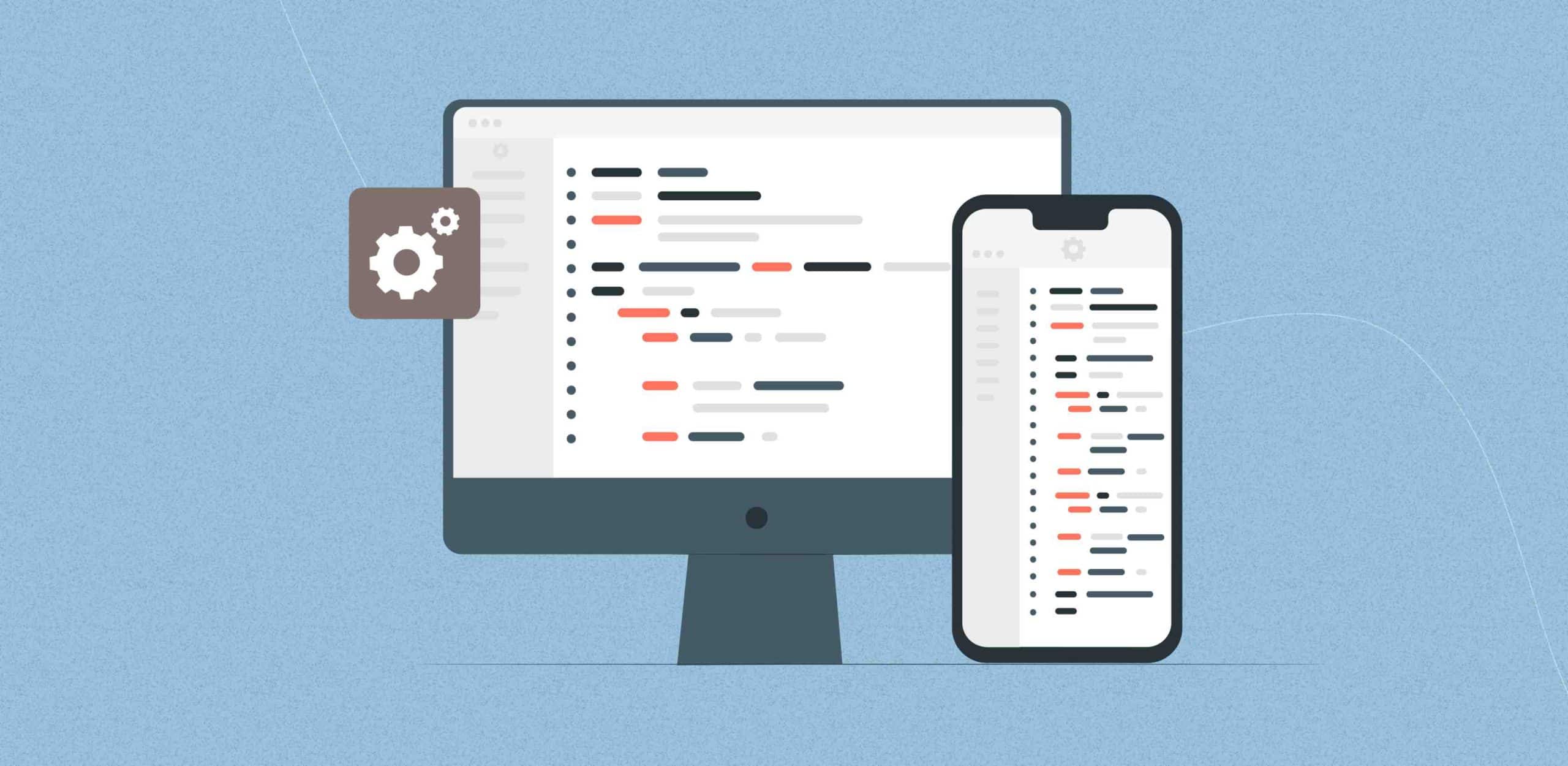Large language models (LLMs) are transforming the way businesses approach customer service and support. These advanced AI-powered tools, including chatbots and virtual assistants, are redefining customer interactions by offering personalized, efficient, and 24/7 support. As companies strive to improve their customer service in today’s competitive digital landscape, large language models are emerging as a groundbreaking solution. In this blog, we’ll dive into how LLMs are revolutionizing customer service and explore the future potential of this AI-driven technology.
What are Large Language Models?
Large language models (LLMs) are advanced artificial intelligence systems that use deep learning techniques to understand, generate, and respond to human language in a natural, conversational manner. Developed by leading AI development companies, these models are trained on massive datasets containing billions of words, allowing them to predict and generate text that closely resembles human communication.
Popular examples of LLMs include OpenAI’s GPT (Generative Pre-trained Transformer), Google’s BERT (Bidirectional Encoder Representations from Transformers), and many others. These models have the capability to perform a wide range of language-related tasks, from answering questions and generating content to providing customer support in real-time.
The Evolution of Customer Service with LLMs
The landscape of customer service has evolved significantly with the integration of large language models(LLMs). Traditional customer support relied heavily on human agents, which often led to delays, inconsistencies, and high operational costs. The introduction of LLMs has shifted this paradigm, enabling businesses to offer faster, more accurate, and personalized responses to customer queries.
Large language models have become the backbone of AI-driven support systems, streamlining operations and enhancing the overall customer experience. From answering frequently asked questions to handling complex inquiries, LLMs in customer service provide a seamless interaction that feels natural and human-like, making them an invaluable asset for businesses looking to scale their support capabilities.
Key Benefits of LLMs in Customer Service
Large language models (LLMs) are revolutionizing customer service by providing advanced AI-driven support that goes beyond traditional methods. They offer businesses a wide array of benefits, including continuous availability, fast and accurate responses, cost savings, and highly personalized customer interactions. These advantages position LLMs as essential tools for companies seeking to elevate their customer service standards and enhance overall customer satisfaction. Let’s explore these key benefits in detail.
24/7 Availability
One of the most significant advantages of large language models is their ability to provide 24/7 customer service. Unlike human agents, LLMs don’t need breaks, sleep, or time off, ensuring that customers receive immediate assistance at any time of the day or night. This around-the-clock availability is particularly beneficial for global businesses that need to cater to customers in different time zones.
The constant availability of LLMs ensures that customers never face long wait times or service delays, which can be frustrating and detrimental to customer satisfaction. For example, an AI-driven chatbot powered by a large language model can promptly handle inquiries, resolve issues, and guide customers through various processes at any hour, maintaining a consistent and reliable service standard.
Instant and Accurate Responses
Large language models are designed to process and analyze vast amounts of data in real time, allowing them to respond to customer inquiries almost instantaneously. By leveraging their deep learning capabilities, LLMs can provide accurate answers that are contextually relevant, reducing response times and improving customer satisfaction.
The real-time nature of LLMs allows them to handle complex queries with ease, pulling from extensive data sources to generate precise responses. For instance, if a customer asks a detailed question about a product’s specifications, an LLM can quickly retrieve and convey the correct information without hesitation. This level of efficiency minimizes the need for human intervention, making customer service faster, more accurate, and highly dependable.
Cost Efficiency
Implementing large language models in customer service can significantly reduce operational costs, making them an attractive option for businesses of all sizes. AI-driven support systems eliminate the need for large customer service teams, cutting down on labor costs, recruitment, and training expenses.
Additionally, LLMs can handle multiple customer interactions simultaneously, leading to increased productivity and cost savings for businesses. A single LLM can manage hundreds of conversations at once, something that would require a substantial human workforce to achieve. This scalability not only reduces overhead costs but also ensures that customer service can scale effortlessly during peak times or as a business grows.
Personalization
Personalization is a crucial factor in delivering exceptional customer service, and large language models excel in this area. By analyzing past interactions, purchase history, and user behavior, LLMs can tailor responses to suit individual customer needs. This level of personalization enhances the overall customer experience, fostering loyalty and long-term relationships between businesses and their customers.
LLMs can remember previous interactions, providing a more coherent and customized experience for returning customers. For instance, if a customer frequently inquires about a specific type of service or product, an LLM can preemptively offer relevant information or suggest personalized recommendations. This ability to adapt responses based on historical data creates a sense of familiarity and care, making customers feel valued and understood.
Real-World Applications of LLMs in Customer Support
Large language models are rapidly transforming customer service, offering a range of innovative applications that streamline operations, improve customer satisfaction, and reduce costs. By leveraging advanced AI algorithms, these models can analyze, understand, and respond to customer queries in ways that were previously impossible. Below, we delve into some of the most impactful applications of LLMs in customer service, showcasing how businesses are harnessing this technology to enhance their support capabilities.
Chatbots and Virtual Assistants
One of the most widespread applications of large language models in customer service is the creation of chatbots and virtual assistants. These AI-driven tools are designed to manage various tasks, from answering frequently asked questions to guiding customers through complex troubleshooting processes.
LLMs enable chatbots to interact with customers in a conversational, natural, and contextually relevant manner. Unlike traditional rule-based bots, which rely on predefined scripts, LLM-powered chatbots can generate dynamic responses, making the interaction feel more human-like. For instance, a customer asking about product features, order status, or technical support can receive personalized responses instantly, enhancing the overall service experience.
These virtual assistants are not just limited to text-based interactions. By integrating with voice recognition technology, they can also function as voice-activated assistants, providing hands-free support for customers on the go. This versatility makes them ideal for diverse industries, including retail, banking, healthcare, and telecommunications, where personalized and efficient customer service is crucial.
Automated Ticketing Systems
Automated ticketing systems are another key area where large language models are making a significant impact. Traditionally, customer service teams have relied on manual processes to sort, categorize, and route support tickets to the appropriate department. This process can be time-consuming, error-prone, and frustrating for both customers and service agents.
Large language models revolutionize this process by automatically analyzing the content of each ticket, understanding the nature of the issue, and categorizing it accordingly. For example, an LLM can distinguish between a technical issue, billing query, or general inquiry and direct it to the right team without human intervention.
Moreover, LLMs can prioritize tickets based on urgency, sentiment, or specific keywords, ensuring that high-priority issues are addressed promptly. This automation not only reduces the workload on human agents but also accelerates the resolution process, leading to faster response times and higher customer satisfaction.
Some advanced ticketing systems even allow LLMs to offer immediate solutions or suggest self-help resources, reducing the need for further escalation and providing customers with quicker resolutions.
Sentiment Analysis and Feedback Processing
Sentiment analysis is a powerful application of large language models that allows businesses to understand the emotions and opinions of their customers. By analyzing feedback from various sources—such as customer reviews, social media interactions, and survey responses—LLMs can determine the overall sentiment of the customer base, identifying trends that can inform business strategies.
Large language models can detect nuances in language, such as sarcasm, frustration, or satisfaction, providing a deeper understanding of customer emotions. This insight enables companies to respond proactively to negative feedback, address issues before they escalate, and refine their products or services to better meet customer needs.
For instance, if an LLM detects a surge in negative sentiment related to a specific product feature, the company can quickly investigate and implement improvements, turning a potential drawback into an opportunity for enhancement. Additionally, sentiment analysis helps businesses identify brand advocates and leverage positive feedback for marketing purposes, further boosting customer engagement.
Feedback processing doesn’t just stop at identifying sentiment; LLMs can categorize feedback into actionable insights, helping companies make data-driven decisions. This capability is invaluable for continuous improvement, allowing businesses to stay aligned with customer expectations and maintain a competitive edge.
Challenges of Using LLMs in Customer Service
While large language models (LLMs) bring transformative benefits to customer service, businesses must navigate several challenges when integrating these AI-driven tools. Understanding these challenges is crucial for companies looking to leverage LLMs effectively and responsibly.
Data Privacy Concerns
One of the most pressing challenges of using large language models in customer service is ensuring data privacy. LLMs are trained on vast datasets, some of which may include sensitive customer information such as personal identifiers, financial data, and other confidential details. This extensive data usage raises significant concerns about how data is collected, stored, and utilized by these models.
To address these concerns, businesses must comply with data protection regulations like the General Data Protection Regulation (GDPR) in Europe, the California Consumer Privacy Act (CCPA) in the United States, and other relevant laws that govern data privacy. Compliance involves implementing robust security measures, such as data encryption, anonymization, and access controls, to protect customer data from unauthorized access and breaches.
Additionally, businesses must be transparent about how customer data is used in AI-driven support systems. Clear communication and consent mechanisms are necessary to build trust with customers, ensuring they are comfortable with how their information is handled. Failure to address data privacy adequately can lead to legal repercussions, loss of customer trust, and significant damage to brand reputation.
Bias and Fairness Issues
Large language models learn from the vast datasets they are trained on, which often include content from the internet, social media, books, and other written sources. Unfortunately, these datasets can contain biases related to gender, race, nationality, and other sensitive topics. As a result, LLMs can inadvertently reproduce and amplify these biases in their responses, leading to unintended and potentially harmful outcomes.
Bias in LLMs poses a significant challenge, particularly in customer service, where fairness and impartiality are paramount. Biased responses can alienate customers, damage relationships, and harm the company’s reputation. For instance, if an LLM provides a response that appears discriminatory or prejudiced, it can result in negative public perception and loss of business.
Addressing bias in large language models requires a multi-faceted approach. AI development companies must implement rigorous testing and validation processes to identify and mitigate biases in the training data. Regular updates, retraining, and fine-tuning of models are essential to reduce the prevalence of biased responses. In addition, integrating human oversight, such as diverse teams of reviewers and moderators, can help identify biased outputs and improve the overall fairness of AI-driven support systems.
Need for Continuous Updates
Language is dynamic, constantly evolving with new slang, trends, and cultural shifts. This ever-changing nature of language means that large language models require continuous updates to remain relevant and effective in customer service. Without regular maintenance, LLMs risk providing outdated or inaccurate responses, which can lead to customer frustration and reduced satisfaction.
Maintaining the performance of LLMs involves frequent fine-tuning and retraining on updated datasets that reflect the latest language trends and customer needs. For example, when new products are launched, or new industry terminology emerges, LLMs need to be updated to understand and respond to these new inputs accurately. This continuous learning process ensures that LLMs provide responses that are not only accurate but also contextually relevant.
However, this need for constant updates can be resource-intensive. It requires collaboration with specialized AI development companies that have the expertise to manage and optimize these models. The process involves significant computational power, time, and financial investment, making it a substantial commitment for businesses. Despite these challenges, staying up-to-date is critical to maintaining the effectiveness of LLMs in customer service.
Furthermore, continuous updates also involve addressing security vulnerabilities, refining algorithms to reduce biases, and enhancing the overall functionality of the models. By investing in the ongoing development and maintenance of large language models, businesses can ensure that their AI-driven support systems remain reliable, secure, and aligned with the latest advancements in AI technology.
Schedule a consultation to explore how LLMs can enhance your operations and elevate customer satisfaction.
The Future of LLMs in Customer Service
As artificial intelligence continues to evolve, the future of large language models in customer service looks promising, with exciting possibilities on the horizon. These advancements will empower LLMs to handle increasingly complex tasks with unparalleled accuracy and empathy, pushing the boundaries of AI-driven support. The future of large language models in customer support will be defined by their ability to integrate with other AI technologies, improve emotional intelligence, and deliver predictive customer service.
Integration with Other AI Technologies
One of the most transformative aspects of the future of large language models is their integration with other AI technologies. This convergence will enable a more immersive and holistic customer service experience, making interactions more engaging and effective.
Combining LLMs with Computer Vision: Integrating large language models with computer vision will allow AI systems to understand not just text but also visual information. This capability will be particularly valuable in customer support scenarios, such as identifying faulty products, reading documents, or assisting with visual troubleshooting through image analysis. For example, a customer could simply upload a photo of a damaged product, and the LLM combined with computer vision could diagnose the issue and provide immediate assistance.
Speech Recognition and Voice Support: The future will also see a deeper integration of LLMs with speech recognition technology, allowing for seamless voice-based customer service. This advancement means that customers will be able to interact with support systems using natural speech, receiving real-time responses that feel conversational and human-like. Multimodal support combining text, voice, and visual elements will create a richer, more personalized experience, meeting customers where they are and how they prefer to communicate.
AI-Driven Analytics: The combination of LLMs with advanced analytics tools will provide businesses with deeper insights into customer behavior and preferences. This integration will help companies tailor their support strategies, optimize workflows, and better understand market trends, ultimately leading to a more data-driven approach to customer service.
Enhanced Emotional Intelligence
A critical frontier for large language models in customer service is the development of enhanced emotional intelligence. Current LLMs can understand and respond to text, but next-generation models will go further, recognizing and reacting to the emotional states of customers with greater sensitivity and accuracy.
Emotion Detection and Adaptive Responses: Future LLMs will be equipped with advanced sentiment analysis capabilities, allowing them to detect emotions like frustration, anger, or joy in customer communications. This emotional awareness will enable LLMs to adjust their tone and approach dynamically, offering more compassionate responses during challenging interactions. For instance, if a customer is expressing frustration, the LLM can respond with empathy and reassurance, creating a more supportive and understanding environment.
Building Stronger Customer Relationships: Enhanced emotional intelligence will also help LLMs build stronger, more personal connections with customers. By recognizing emotional cues, these models can engage in conversations that feel genuine and caring, helping to foster trust and loyalty. This improvement will be especially valuable in sensitive situations, such as handling complaints or providing support during a crisis, where a human touch is essential.
Personalized Customer Journeys: By leveraging emotional intelligence, large language models will be able to create more personalized customer journeys. Understanding the emotional context of each interaction will allow businesses to tailor their support approach, ensuring that customers feel valued and understood throughout their engagement with the brand.
Predictive Customer Service
One of the most exciting prospects for the future of large language models in customer support is the ability to deliver predictive customer service. This forward-thinking approach will enable businesses to anticipate customer needs and address potential issues before they even arise.
Proactive Issue Resolution: Predictive customer service, powered by large language models, will shift the paradigm from reactive to proactive support. By analyzing historical data, user behavior, and real-time interactions, LLMs can identify patterns that signal potential problems. For example, if a customer frequently contacts support about a particular issue, the LLM can preemptively offer solutions or recommendations, reducing frustration and enhancing the customer experience.
Anticipating Customer Needs: Future LLMs will be capable of predicting customer needs based on previous interactions and broader market trends. This predictive capability will allow businesses to offer personalized suggestions, such as recommending complementary products, alerting customers to potential account issues, or providing timely service updates. By anticipating needs, companies can create a more proactive and engaging service experience that feels intuitive and helpful.
Reducing Customer Effort: Predictive customer service reduces the effort required by customers to get the help they need. Instead of waiting for customers to reach out with a problem, large language models will be able to offer proactive solutions, streamlining the support process. This not only saves time for the customer but also enhances overall satisfaction by addressing concerns before they escalate.
Data-Driven Decision Making: Predictive insights generated by LLMs will also empower businesses to make more informed decisions about their customer service strategies. By understanding the common pain points and predicting future needs, companies can adjust their offerings, improve service quality, and stay ahead of customer expectations.
Shaping the Future of Customer Experience
The continued evolution of large language models in customer service promises to reshape the future of customer experience in profound ways. As LLMs become more sophisticated, empathetic, and proactive, they will elevate the standard of AI-driven support, making it an indispensable asset for businesses of all sizes.
From integrating with cutting-edge AI technologies to developing emotional intelligence and predictive capabilities, large language models are set to transform customer support into a dynamic, responsive, and deeply personalized service. As companies embrace these advancements, they will be better positioned to meet the ever-evolving expectations of their customers, driving satisfaction, loyalty, and long-term success.
Conclusion
Large language models (LLMs) are undoubtedly revolutionizing customer service and support, offering businesses an opportunity to enhance their operations, reduce costs, and provide a superior customer experience. As AI development continues to evolve, the capabilities of LLMs will only grow, paving the way for more advanced, personalized, and efficient customer support solutions.
By embracing large language models, companies can stay ahead of the competition, meet the ever-increasing expectations of their customers, and shape the future of customer service. If you’re ready to explore how LLMs can transform your customer service strategy, we’re here to help. Contact us today to learn more about integrating cutting-edge AI-driven support into your business. Let’s shape the future of customer service together!
Let’s transform your business for a change that matters.
F. A. Q.
Do you have additional questions?
What are large language models (LLMs)?
Large language models are AI systems that use deep learning algorithms to understand, generate, and respond to human language in a natural, conversational way. They are designed to handle a wide range of language-related tasks, including customer service, content generation, and more.
How do large language models improve customer service?
LLMs improve customer service by providing instant, accurate, and personalized responses to customer inquiries. They operate 24/7, handle multiple requests simultaneously, and enhance the overall customer experience through empathetic and context-aware interactions.
What are some examples of large language models used in customer support?
Popular examples include OpenAI’s GPT series, Google’s BERT, and Microsoft’s Turing models. These LLMs are widely used in chatbots, virtual assistants, and automated ticketing systems to streamline customer service operations.
What are the main benefits of using LLMs in customer service?
The main benefits include 24/7 availability, cost efficiency, instant and accurate responses, and personalized support. LLMs help businesses reduce operational costs, improve response times, and enhance customer satisfaction.
Can large language models handle complex customer service tasks?
Yes, advanced LLMs can handle complex tasks, such as troubleshooting technical issues, managing customer complaints, and providing detailed product information. They can also escalate queries to human agents when necessary, ensuring that complex issues are addressed appropriately.
Are there any limitations or challenges with using LLMs in customer service?
Challenges include data privacy concerns, biases in responses, and the need for continuous updates to keep the models relevant and accurate. Addressing these challenges requires ongoing monitoring and collaboration with AI development experts.
How do large language models integrate with other AI technologies?
LLMs can integrate with technologies like computer vision, speech recognition, and AI-driven analytics. This integration allows for multimodal customer support, including text, voice, and visual assistance, creating a more comprehensive service experience.
What is predictive customer service, and how do LLMs contribute to it?
Predictive customer service uses AI to anticipate customer needs and address potential issues before they arise. LLMs contribute by analyzing past interactions and data patterns to proactively offer solutions, improving service quality and reducing customer effort.
How do LLMs enhance emotional intelligence in customer service?
Future LLMs will have improved emotional intelligence, allowing them to detect and respond to the emotional states of customers. This enables more empathetic and compassionate interactions, which can significantly improve customer satisfaction and loyalty.
How can businesses get started with integrating large language models into their customer service?
Businesses can start by consulting with AI development companies specializing in LLMs. These experts can guide the integration process, customize LLMs to meet specific business needs, and provide ongoing support to maximize the benefits of AI-driven customer service.














